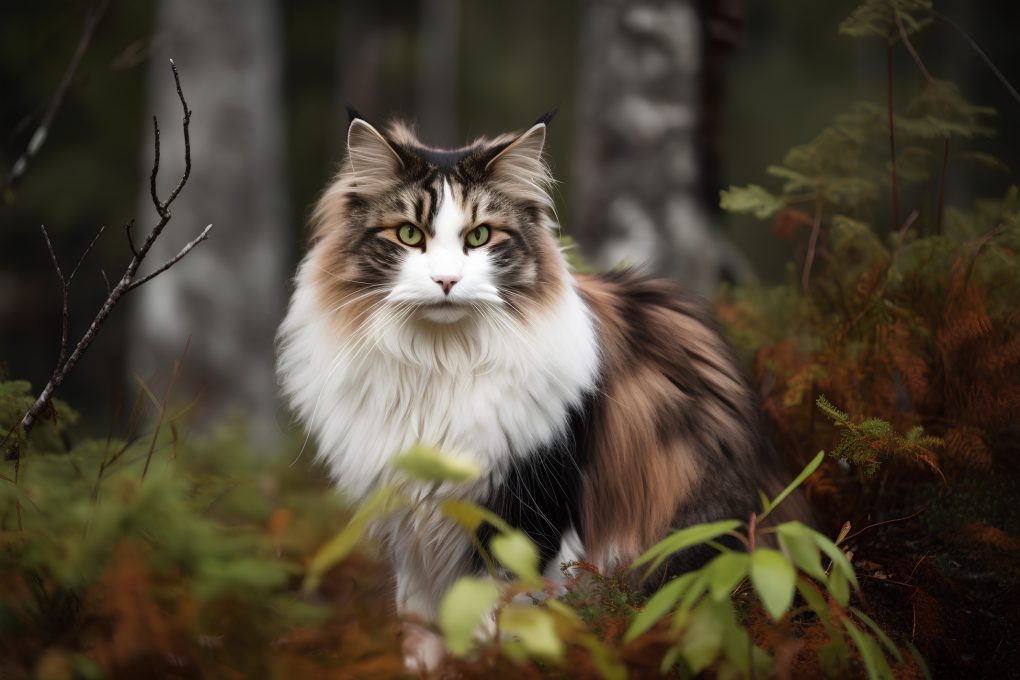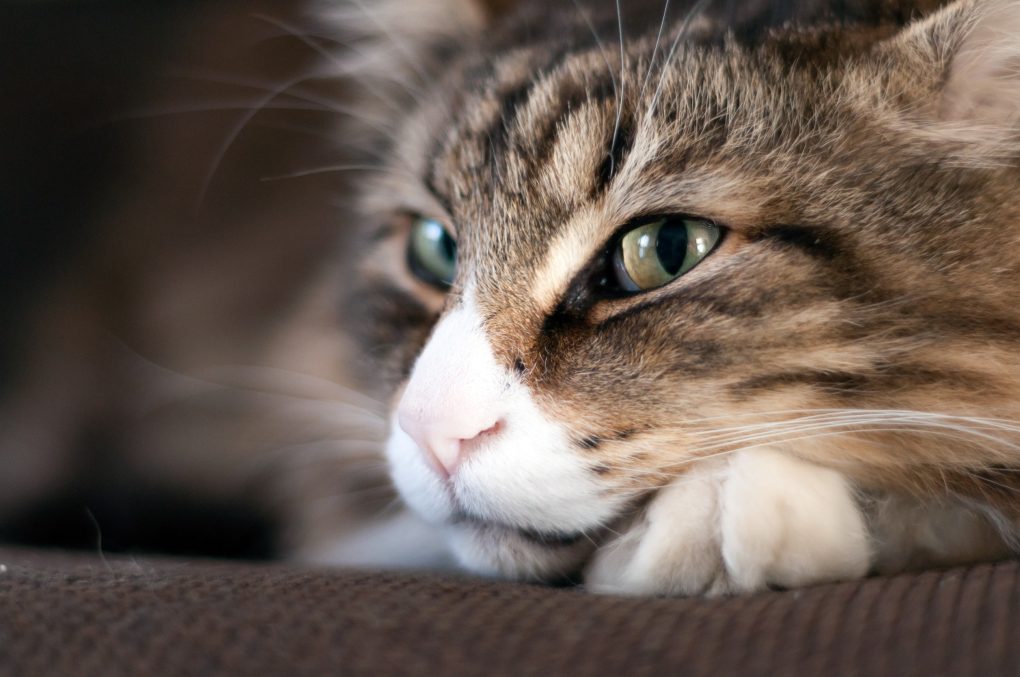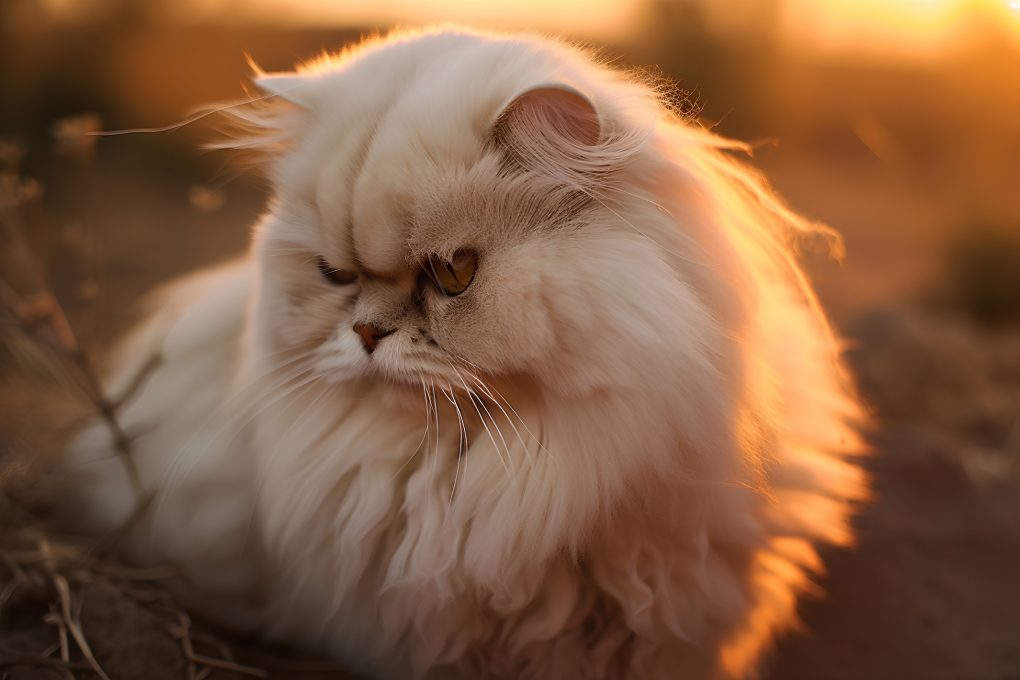Norwegian Forest Cat vs. Persian: The Similarities and Differences Between These Cat Breeds
The Norwegian Forest cat is a large, muscular breed with a thick, water-resistant coat. They have great hunting skills and a love of the outdoors. On the other hand, the Persian is a smaller breed with a long, luxurious coat and flattened face. Persians are gentle and quiet, making them great indoor pets; however, their long coats require regular grooming to prevent matting and skin problems.
In terms of temperament, Norwegian Forest cats are more active and outgoing than Persians. They enjoy playing and exploring, while Persians prefer a more relaxed lifestyle. Norwegian Forest cats tend to be healthier and have fewer breed-specific health issues than Persians, who can suffer from respiratory problems and eye issues due to their flat faces.
The Norwegian Forest Cat and the Persian Cat have distinct differences regarding shedding. While both breeds have long, luxurious coats, the Norwegian Forest Cat sheds more moderately than the Persian Cat.


Table of Contents
The Similarities Between Persian and Norwegian Forest Cats
Affectionate
Norwegian Forest and Persian cats have affectionate natures toward their owners, and they can both form strong bonds with their human families and enjoy being close to them.
Norwegian Forest cats are friendly, social, and affectionate, with playful and curious personalities. They love spending time with their owners and following them around the house. They are also known to be quite vocal and will purr, meow, and trill to express their affection.
Similarly, Persian cats are gentle, have sweet dispositions, and are often docile and affectionate. They enjoy being petted and will often seek out their owner’s attention. Persian cats are also calm and relaxed, making them great lap cats.
Both breeds tend to bond closely with their owners and enjoy spending time with them. They may even follow their owners from room to room and seek out their company. Persian cats and Norwegian Forest are great pets for families and individuals looking for a loving and affectionate companion.
Grooming
Norwegian Forest and Persian cats require regular grooming to maintain their long, luxurious coats. These two breeds have long, thick coats that require regular grooming. Norwegian Forest cats have a water-resistant double coat, while Persian cats have a single, long coat. Both breeds shed seasonally, and their coats can become matted and tangled if not properly groomed.
These breeds require daily brushing to prevent matting and remove loose hair. A metal comb can also be useful for removing tangles and mats. While both breeds are generally clean and groom themselves, occasional baths may be necessary to maintain their coats. Therefore, using a cat-specific shampoo and thoroughly drying the coat to prevent matting is important.
Both breeds are prone to eye and ear infections; regular cleaning is necessary to prevent issues. Eye discharge should be cleaned with a damp cloth, while ear wax can be cleaned with a cotton swab. They further require regular nail trimming to prevent overgrowth and to maintain healthy paws.
Intelligence


Norwegian Forest and Persian cats are intelligent breeds, able to learn and respond to their environment. Both breeds are trainable and can learn tricks and respond to commands. Positive reinforcement training methods are best for both breeds.
These two breeds can solve problems and figure things out on their own. For example, they can learn to open doors or cabinets to access food or toys. They are curious and enjoy exploring their environment. For example, they may investigate new objects or areas in their home, and they may even be able to open doors or cabinets to access new areas.
Also, both breeds are adaptable and can adjust to changes in their environment. For example, they can learn to live in a new home or adjust to changes in their routine. They also enjoy playing and engaging in interactive play with their owners with toys or chasing after objects.
Health Issues
While Norwegian Forest and Persian cats are both generally healthy breeds, they have some similarities in their potential health issues. Both breeds are prone to Polycystic Kidney Disease (PKD), a genetic condition that can lead to kidney failure. Breeders should test for PKD and avoid breeding cats with the condition.
These breeds are prone to dental problems, including gum disease and tooth decay. Regular dental care, such as brushing their teeth or providing dental chews, can help prevent these issues. Both breeds are prone to obesity, especially if they are not given enough exercise or are overfed. Obesity can lead to various health issues, including diabetes, heart disease, and joint problems.
Persian cats, particularly, are prone to respiratory issues, such as breathing difficulties and upper respiratory infections. Both breeds are prone to eye issues, including entropion (eyelids that turn inwards), which can cause irritation and inflammation of the eye.
The Differences Between Persian and Norwegian Forest Cats
Appearance
Norwegian Forest and Persian cats have distinct differences in appearance, including their coat type, body shape, and facial features. Norwegian Forest cats have a long, thick, water-resistant double coat, while Persian cats have a single, long, silky coat.
Norwegian Forest cats have muscular and athletic bodies, long legs, and long, bushy tails. Persian cats have a stocky, cobby body shape, short legs, and a fluffy tail. Norwegian Forest cats have triangular-shaped faces, straight profiles, and large, almond-shaped eyes. Persian cats have round faces with a shortened snout, small ears, and large, round eyes.
Also, Norwegian Forest cats are generally larger than Persian cats, with males weighing between 12-16 pounds and females weighing between 9-12 pounds. So, if you wonder, how big is the Norwegian Forest Cat? You can expect them to be a substantial and magnificent feline companion. Persian cats typically weigh between 8-12 pounds.
Temperament


Norwegian Forest cats are known for being active and playful, enjoying climbing and exploring their environment. Persian cats are more sedentary and tend to be content lounging on the couch.
Both breeds are affectionate, but Norwegian Forest cats tend to be more outgoing and social. They enjoy spending time with their owners and may follow them around the house. Persian cats can also be affectionate but may be more reserved and prefer to snuggle on their terms.
Norwegian Forest cats have playful and energetic natures and enjoy interactive play with their owners. Persian cats can also enjoy playtime but may have a different level of energy or enthusiasm than the Norwegian Forest cat.
Persian cats are more independent than Norwegian Forest cats and may not need as much attention or interaction from their owners. They can be content entertaining themselves, while Norwegian Forest cats crave more attention and social interaction.
